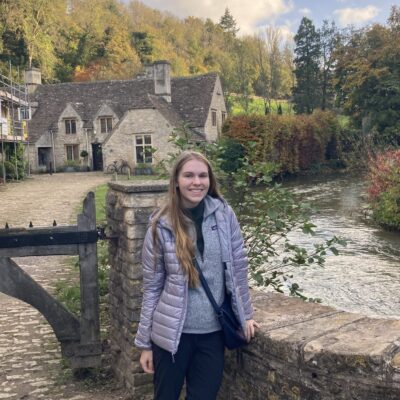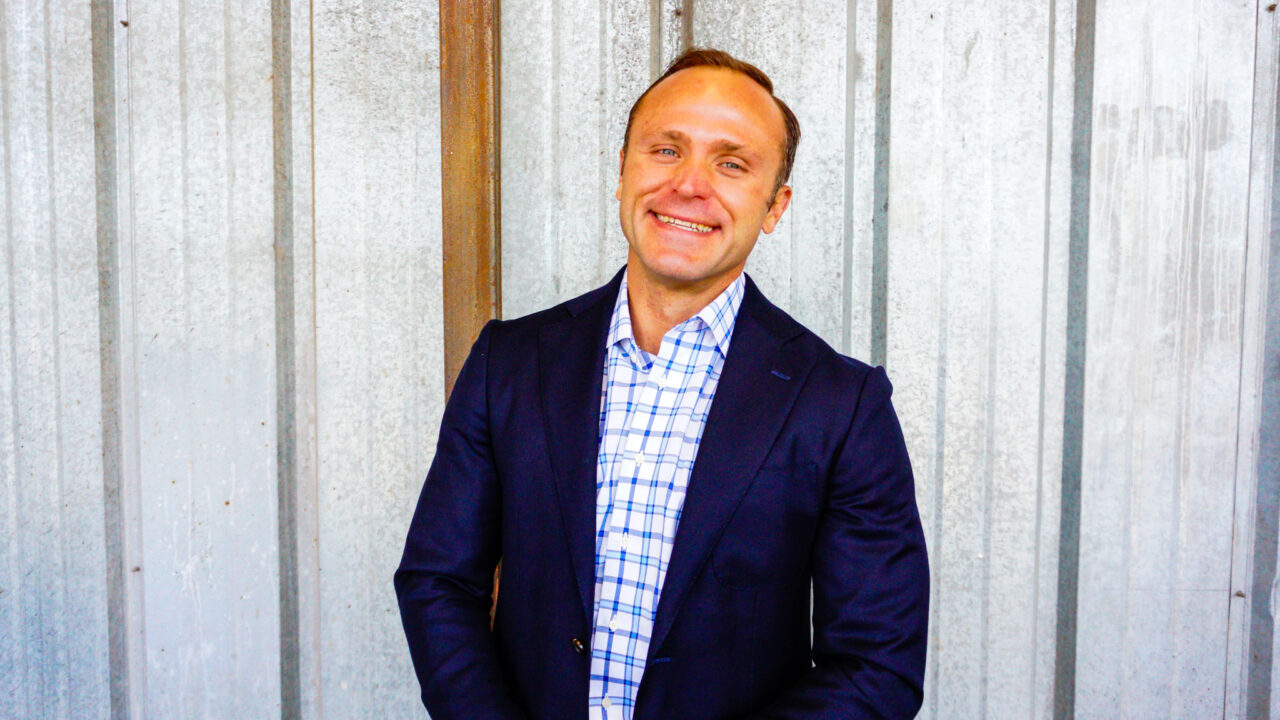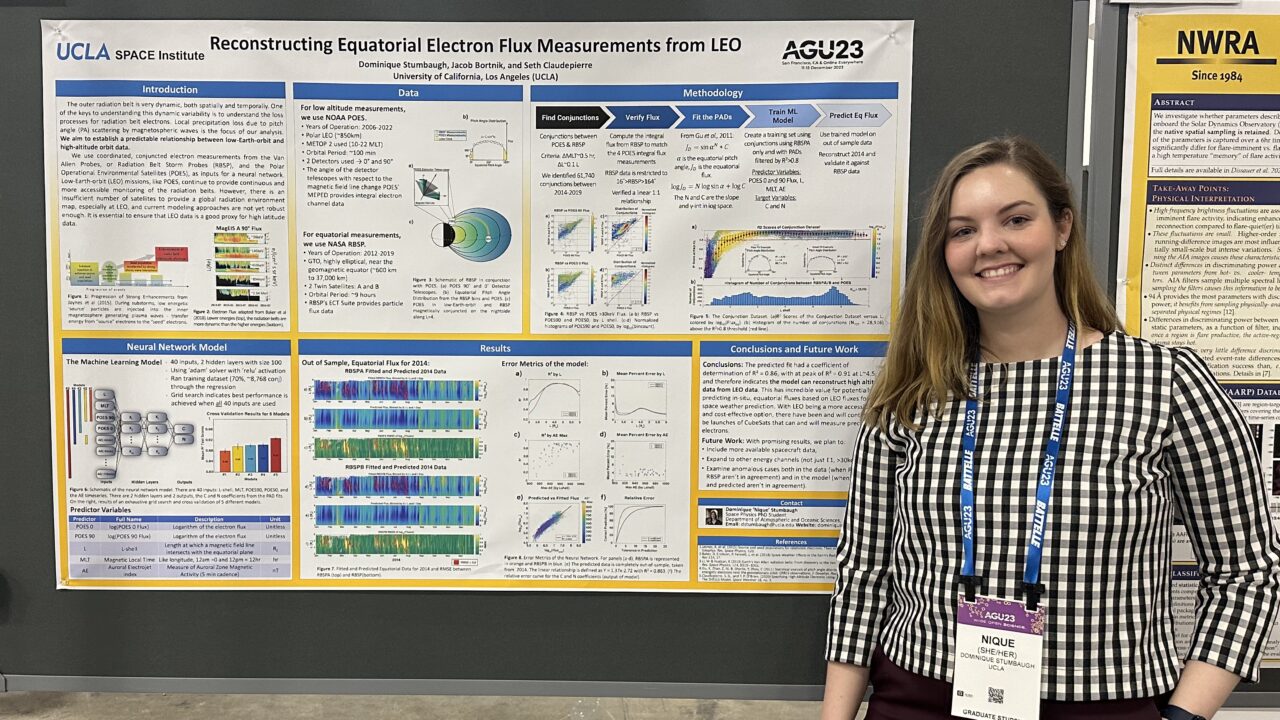
Navigating a New Climate: Daniel Sepulveda-Arias’ Journey
How an international student from Chile is making waves in CDLS
Daniel Sepulveda-Arias was always drawn to science, a fascination he credits to unimpeded natural curiosity. Growing up, Daniel’s family had a collection of books that stoked his interest in the world around him. He was fascinated by the books with maps, descriptions of other countries on far off continents, visual compendiums exploring the Solar System, ancient dinosaur ecosystems, and even landscapes.
“At different points, I dreamed of becoming an architect, a paleontologist, or even an astronaut,” he recalls.
Daniel grew up in Talcahuano, a coastal port city tucked at the mouth of the Biobío River in Chile, where the river’s waters carry sediment from the Andes to the ocean. His childhood was shaped by beach walks and family camping trips, instilling an unwavering fascination with the landscapes around him. Chile is one of the most geologically active regions on Earth, where earthquakes, volcanoes, and dramatic coastlines are the norm. It’s fitting, then, that Daniel would one day study geology. What’s more surprising is that he now studies South American geology from far away — from a university lab at UCLA, reconstructing what Chile and nearby Antarctica looked like millions of years ago.
Chile’s geologic activity comes from the vast subduction zone beneath its coastline that causes devastating earthquakes and is responsible for the towering Andes Mountains along its eastern boundary. Situated along the Ring of Fire, it’s also subject to frequent tsunami alerts from across the Pacific Ocean. Experiencing these events as an adolescent left Sepulveda-Arias deeply curious about the forces behind them.
By middle school, his interests narrowed. At first, he considered chemistry, physics, or biology, but wanted to study something broader that tied these fields together to explain how the Earth itself worked, giving meaning to the natural hazards around him. He discovered geology late, almost by accident.
“At first, I didn’t even know geology was a discipline,” he says, chuckling, “since it wasn’t widely known as a career path in Chile.”
This newfound love for geology harmonized with Daniel’s profound desire to live abroad. He describes himself as a multicultural person, drawn to different languages and perspectives. During his undergraduate degree, many of his closest friends were international exchange students who stoked a deepening curiosity about the world. He began to dream of studying abroad in graduate school. To reach his goal, Daniel knew he’d need to travel. While motivated, this was a daunting task that left him questioning his chances of success.
Why? Opportunity. Daniel’s home country of Chile is an emerging economy with rapid growth but is still catching up to Western nations in areas like research infrastructure and higher education access. While the mining industry is strong, and there is an Antarctic research institute, there are fewer long-term job positions in other subfields of geologic research.
“I’m first [generation]. My mom is a housewife, and my dad was an electrician,” Daniel says. “And nobody in my close family went to university, so for me, I had no idea about higher education.”
After college, Daniel applied to the Fulbright program with the Chilean government, which offered financial support, English-language assistance, and application coaching for US graduate schools. After visiting a few universities that had accepted him, UCLA stood out — a diverse campus in Los Angeles with strong geoscience programs and a large international student body. To him, UCLA was an obvious choice.
At UCLA, Daniel studies ancient climates, which is a field called paleoclimatology. His focus lies in the high latitudes of the Southern Hemisphere, specifically the Antarctic Peninsula and Chilean Patagonia, during a period between 66 and 14 million years ago when Earth was far warmer than today. By reconstructing the regional climate of that era, Daniel hopes to help climate scientists understand how Earth might respond to current and future warming.
While Daniel has never visited Patagonia — the iconic mountainous region that spans the southern portions of both Chile and Argentina — he was still inspired by the mythology around it. For geologists, Patagonia holds rare and revealing clues: sediment layers that record ancient climates, glacial advances, and sea-level changes. Yet, relative to other regions of the world, particularly the Northern Hemisphere, Patagonia’s climatic history remains understudied.
The tools of the trade are unique. Daniel works with fossilized seashells and calcium-rich soil nodules, which are chunks of ancient soil that preserve the temperatures and conditions under which they formed. The seashells, once deposited along an ancient coastline, are now exposed high in the mountains due to tectonic uplift. These materials offer rare glimpses into a Southern Hemisphere past that remains critically under-researched.
Daniel didn’t initially plan to study paleoclimate in graduate school. In college, he researched fault systems in Chilean mines and began his UCLA studies under a geophysicist specializing in remote sensing. But by his second year, he realized that path didn’t fully align with his growing interest in climate science and geochemical tools for reconstructing past environments.
Seeking a better fit, he reached out to Dr. Aradhna Tripati, the only faculty in his department focused on climate change. She invited him to join her lab in 2022 where he found a project that kept him connected to the landscapes that first inspired him. Within the year, he became a Fellow with the Center for Developing Leadership in Science (CDLS), a community that provided mentorship, collaboration with international peers, and a shared commitment to building a more inclusive STEM culture.
Daniel is far from the only international student attending graduate school at UCLA, and is not alone in CDLS. Living abroad as an international student in one of the US’s largest cities has been an illuminating and exhilarating experience for Daniel. It’s one of the first times that he’s lived alone as an adult, and so he leans tremendously on CDLS’s community for support.
“Overall, it has been a very positive experience,” he says. “But that doesn’t mean that I haven’t had challenges.”
In the background of his academic journey, Daniel has been navigating a worsening chronic illness. The US healthcare system — opaque, costly, and time-consuming — has been a harsh contrast to Chile’s more accessible model. Finding specialist care often takes entire days, and despite his modest graduate stipend, he pays frequent high copays, with some treatments not covered at all. Delayed paychecks add further stress, and he often wonders how others without insurance manage in such a system.
Reflecting, Daniel says, “I think all the challenges that I’ve had have taught me resilience and persistence, so I’ve grown a lot as a person, and professionally, and academically, too.”
When he joined Tripati’s lab in 2022, a new path opened. He found a research home and a welcoming community of international scholars, many of whom were also studying paleoclimate and navigating similar challenges.
“I found out about CDLS from my colleagues — people in the lab — and I found that it’s a very nice institution, because I think being involved in the community and sharing the science that we do, and the involvement between science and the real life, or academia, and, like, life that is outside academia is very important, because it’s that in the way that we progress as society.”
Within the CDLS ecosystem, he engages with other likeminded researchers at similar academic stages, benefits from peer-to-peer and vertical mentorship models, and connects with other international students doing similar work in paleoclimatology. But at the end of the day, Daniel feels that CDLS continually provides him the opportunity to do what he set out to do. Now, Daniel lives an international dream where he learns from others, grows with them together, and works collaboratively towards creating a more compassionate STEM environment.




